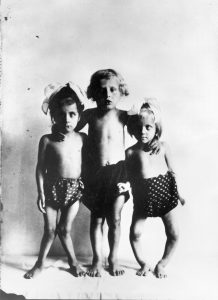Origin
The nutritional value of cod liver oil has been well recognised in Northern European cultures for centuries. There are countless stories of fish guts (including the liver) being put into barrels of seawater after filleting. The meat and guts would break down, and the oil would naturally release and sit on top of the water. People would simply take a spoon of the oil to consume as they passed the barrel. This practice goes back thousands of years in Nordic countries which is where cod are found.

Image by I, Aotearoa
Although Gadus Morua (known as Atlantic Cod today) was used to make this oil, it was not exclusively Gadus Morua. Many other species of fish would have been added to the barrel too, so technically this would have been a fish oil, rather than a cod liver oil. These cultures would use this oil for general health but also associated it with easing muscle soreness and stiff joints. It was both food and medicine.
The oil/ sauce that was produced was, understandably, quite inconsistent in terms of nutritional quality and content. The barrels would not have been airtight, and so oxidation would have degraded the fatty acids and vitamins. The use of less nutritional fish would have reduced the overall nutritional content. There was no quality control, understanding of how to protect nutrients, or consistent methodology. Yet, despite this, it was well recognised for being healthy.
In other parts of the world, from the Mediterranean to South Asia sauces made from fermenting fish in high salt conditions for months, or even years, is done. It preserves nutrients and prevents unwanted bacteria growth, both of which are extremely important with food storage and safety being such a problem. However, as cod is only found in the Northern regions, these fish sauces didn’t contain cod liver oil. Instead, they would have been made of fish such as anchovies. These foods were still a valuable source of nutrition.
Ancient Romans
These fish sauces and oils were produced extensively throughout Europe and hailed for possessing various health benefits in various cultures. However, production was been localised to coastal communities, and was still largely based on what was being fished, rather than focusing on specific species. As the Romans expanded their empire through France and Britain they encountered these various localised sauces and created the first commercial fish sauce production. The sauces they produced are broadly known as ‘Garum’. For the first time, commercial and more standardised production of fermented fish oils/ sauces began.
There was great variation in the quality of the garum. High-quality garum would be sold for extremely high prices, but everyone from the upper class to the very poor enjoyed a form of garum. It was used as a flavour enhancer for foods (including porridge) and appears regularly in Roman recipes.

Roman Garum pits
A particularly popular garum in the Roman Empire was made in a region of France on the Atlantic coast that produced a sauce called Garum Armoricum. This sauce was made from fermenting large fish caught in the Atlantic ocean and was associated with promoting strength. When the Roman Empire fell, the production of its nutritious sauces was largely lost.
Industrial Revolution
During the 1800s cod liver oil was a staple for many people in fishing communities, but production was still far from an exact science. Cod fishing was becoming a large business, and so the highly nutritious cod livers were commonly used to produce cod liver oil, rather than all the internal organs. Producing cod liver oil was done the same way it had been done historically. Cod livers were left in barrels of saltwater near the docks, and the oil was removed/ bottled. The final product was very variable, for example, the colour would vary from dark brown to very pale yellow. However, two things were widely understood – the first was that it was good for you, and the second was that it tasted terrible.

Children with rickets
It was in the mid-1800s that cod liver oil began to attract the attention of the growing medical community. It was discovered that cod liver oil was an effective anti-rickets treatment (a disease caused by a lack of vitamin D) and a range of other ailments. Its popularity as a supplement began to grow throughout Europe and North America.
It was in the mid-1800s that cod liver oil underwent its first major processing change for centuries. In Norway, a scientist tried to purify cod liver oil to produce a ‘superior’ light brown oil through filtration. Even though this is a significant step in the development of cod liver oil, the understanding of the science was still extremely poor. For example, the aim of filtration was to try and increase the concentration of beneficial components… such as elements of bile.
1900’s
In the early 1900s nutritional research is starting to develop, and the term vitamine is being used to refer to unknown but essential nutrients. Cod liver oil produced through lacto-fermentation was known to be high in ‘vitamine‘, and was extensively researched. Within a few years, vitamin A and vitamin D were identified in cod liver oil as being the components that were beneficial. This led to cod liver oil extracts being produced in pill form, which was more palatable than cod liver oil but failed to gain a great deal of traction amongst consumers. People still wanted the liquid, despite its taste.
The latter half of the 1900’s saw a boom in the development of industrial processing of many food types, including cod liver oil. Filtration, concentration, deodorisation, winterisation, alkali treatments, and chemical alteration were all done in one way or another with an interest in making the product more palatable, economic, and aesthetically pleasing. To speed up the separation of oil from the livers, the livers would be heated (sometimes under pressure). To increase the concentration of omega-3 fatty acids, they would be chemically converted into ethyl-esters. To increase the concentration of vitamins, synthetic vitamins/ vitamins from other sources would be added. As the visual appeal of the oil began to become important, more intensive filtration methods were used to produce a more clear oil. These filtration methods would remove various nutrients such as vitamin co-factors, and fatty acids from the oil. The resulting oil was a far cry from traditional oil, which throughout history had been known for its health benefits.
Nutritional sacrifices had been made in the name of marketing and economics, but developments in food science helped to improve other aspects of cod liver oil. The process of oxidation was better understood and a more consistent product could be produced.
Modern-day
Throughout the 20th century, and into the 21st century, industry developed at an alarming rate, and the negative effects were beginning to become apparent to the wider natural world. The EU became concerned that the industrial chemicals PCBs and dioxins were getting concentrated in the food chain. These chemicals became concentrated in the fats of marine animals, which includes cod liver oils. These chemicals pose serious long terms health risks, and so cod liver oils require special filtration to remove them. The last major change in cod liver oil production has been to filter out these harmful chemicals to safe levels.
Traditional & Modern
A trick was missed throughout the history of cod liver oil. As cod liver oil production modernised, aside from an attempt to purify the bile elements, the process of lacto-fermentation was not perfected but rather forgotten about. Lacto-fermented cod liver oil was known for thousands of years to be healthy even without a perfected process that protects against rancidity etc.
We have spent the last decade researching cod liver oil production using traditional methods supported with scientific testing and research. By fermenting in air-tight vats, using nitrogen gasses, carefully measuring salt concentrations, and managing bacterial fermentation, we can consistantly produce a highly nutritious traditional oil, without any of the negatives.
No way can you have pure cod liver oil as an ex trawler man the only liver separated from all other fish was halibut all other livers whether from cod haddock coley and all other species went into the same tank and was in the tank swishing around after 18 days turned to fish oil so if you can prove that cod livers were kept separate as halibut it should never be called cod liver oil
Hi Robin,
Thanks for your comment. You are right, many livers are mixed, and most cod livers oils are actually a mixture of many species as you describe. This isn’t something most people realise. However, you can get pure cod liver oil. Separating cod livers from other livers is obviously very straightforward, and although most fishermen we speak to would prefer to mix, they are happy to supply exclusive Atlantic Cod livers. So we can very proudly say that our cod liver oil is pure cod liver oil.